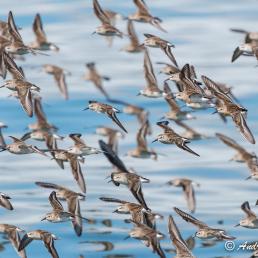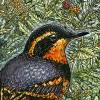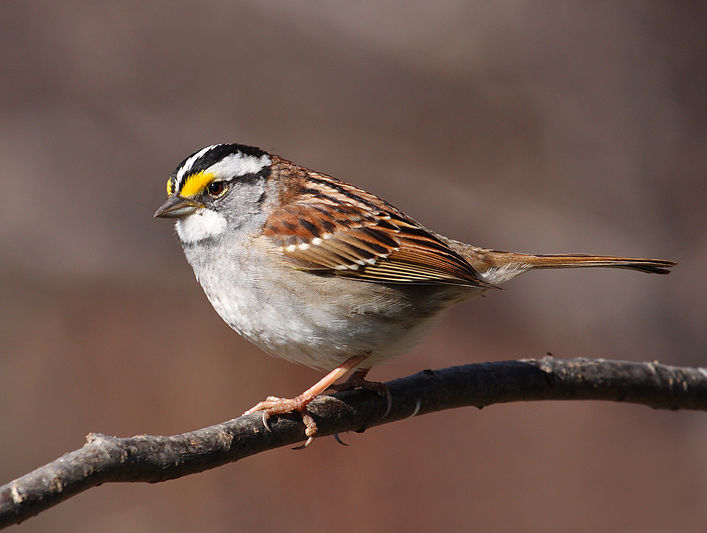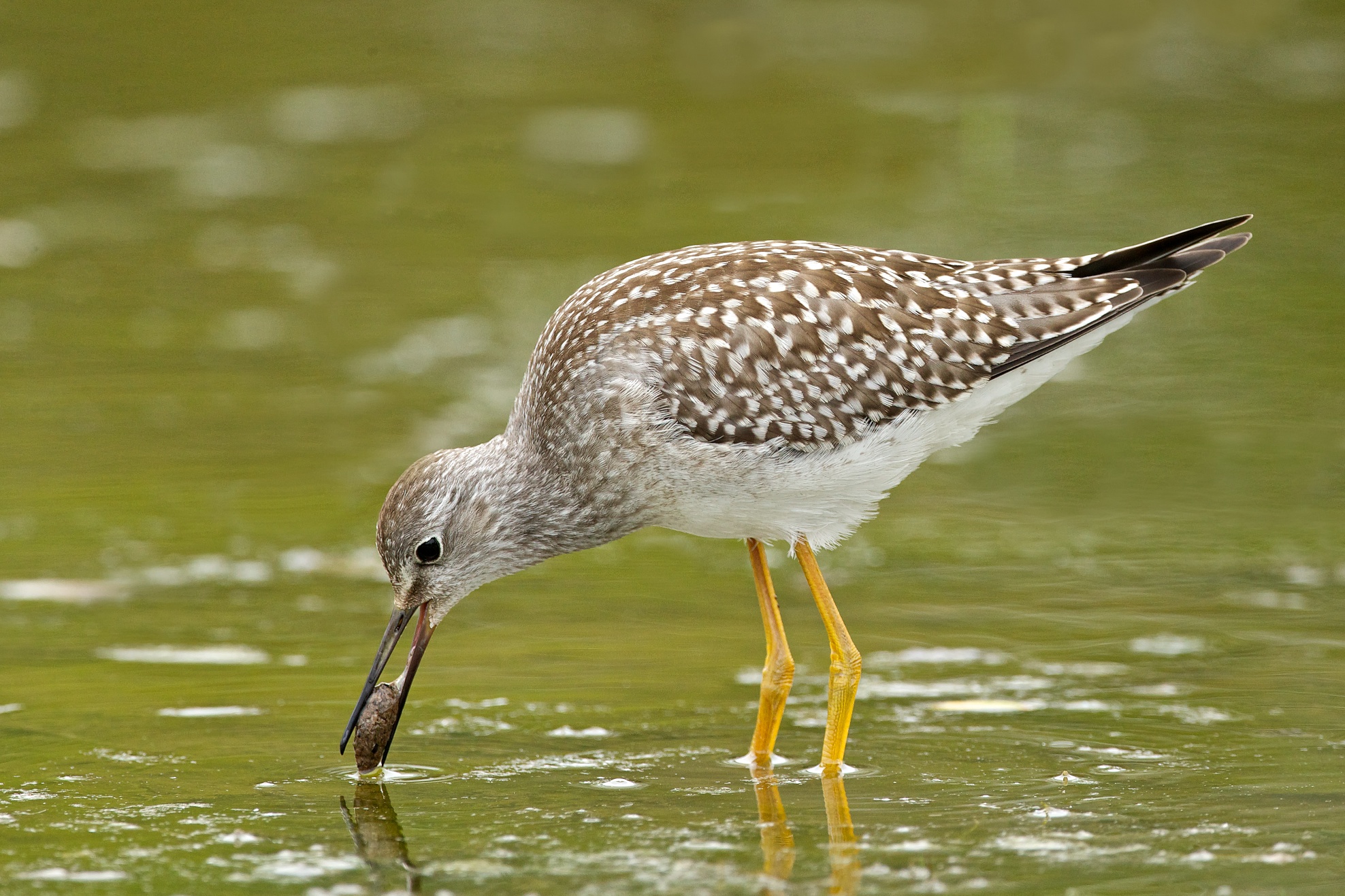

Join BirdNote tomorrow, November 30th!
Illustrator David Sibley and actor H. Jon Benjamin will face off in the bird illustration battle of the century during BirdNote's Year-end Celebration and Auction!
The boreal forest is called “North America’s bird nursery” because nearly half of the species found in the U.S. and Canada nest there. It’s also a buffer against climate change. But the forest is under pressure. Many boreal birds are declining, while development and resource extraction are intensifying. If it’s to survive, partnerships between communities, businesses, and governments will be a vital part of the process. Learn how you can help #BringBirdsBack to the boreal forest in this special edition of BirdNote.
Support for this special edition of BirdNote comes from Green Century.
The exquisite songs of the White-throated Sparrow and Hermit Thrush evoke the boreal forest, a vast and pristine ecosystem of forests, wetlands, and rivers stretching from Alaska to Newfoundland.
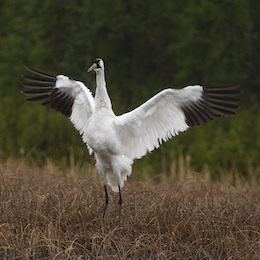
It’s called “North America’s bird nursery,” because nearly half of the species found in the U.S. and Canada nest there. Nearly three billion birds make their way to the boreal forest in spring and early summer, including the Rusty Blackbird, the Mew Gull, and the endangered Whooping Crane. Still more species of birds stop in the boreal to rest and feed before continuing even farther north. Birds like Hudsonian Godwits and Lesser Yellowlegs.
During spring and summer, the boreal forest is home to familiar backyard birds such as Dark-eyed Juncos and Northern Flickers, along with Blackpoll Warblers that winter across the Caribbean into South America. At the end of the breeding season, as many as five billion birds head south from the boreal.
Some birds are especially reliant on the boreal forest. Three-quarters of all Common Loons breed in the boreal. And 95% of Bonaparte’s Gulls!
The boreal forest is also a buffer against climate change. On average, boreal forests store twice as much carbon per acre as tropical forests. Keeping this carbon stored in the ground and out of the atmosphere is one of the most important and easiest ways we can prevent climate change from getting worse.
Canada’s boreal forest also serves as a refuge for birds and other wildlife moving north in search of suitable habitat as landscapes change. But the forest is under pressure.
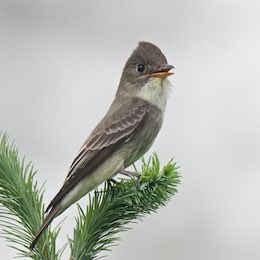
Many boreal birds, including Olive-sided Flycatchers and Connecticut Warblers, are declining, while resource extraction and development are intensifying. According to the Boreal Songbird Initiative, oil and gas, timber, mining, and hydroelectric development arepushing northward at increasing rates. Roads reach farther into the heart of the boreal each year to make those resources accessible. If it’s to survive, partnerships between communities, businesses, and governments will be a vital part of the process.
Fortunately, Indigenous Nations are moving to protect boreal forest lands on a sweeping scale. In 2019, the Lutsel K’e Dene First Nation worked with the Canadian government to create one of the largest protected areas in the country. The Sahtu Dene have plans to conserve an area 12 times the size of Yellowstone. And the Sayisi Dene want to preserve more than 12 million acres—habitat for millions of nesting landbirds and tens of thousands of migrating waterfowl.
Nearly two-thirds of all forest products from Canada's boreal forest go to the United States, but you can help boreal birds by making thoughtful choices.
- Use less paper and print on both sides when you can.
- Sign up for electronic billing.
- Use your smartphone to make lists.
- Opt out of most paper mail -- see Related Resources below.
- Scan documents instead of copying them.
- Consider purchasing lumber certified by the Forest Stewardship Council for your home projects.
- Finally, choose recycled paper. Aim for 100% post-consumer recycled material in your paper towels, toilet paper, and other paper products.
Learn more in the Related Resources below. Together, we can #BringBirdsBack.
If you’d like to hear longer BirdNote stories that connect us more deeply with birds, nature, and one another, subscribe to BirdNote Presents. Our next series, about the Greater Sage-Grouse, follows a city-slicker journalist who moves to sagebrush country in search of the troubled bird that’s dividing the West. Subscribe to BirdNote Presents today and watch for the first episode of Grouse on Sept. 15.
Related Resources
Meet the birds of the boreal forest
Learn about the Boreal Songbird Initiative
Help #BringBirdsBack
Find FSC-Certified products
Manage the business mail you receive
Stop credit card offers and insurance coverage offers
Opt out of coupon offer packets
Choose the catalogs you want to receive
Listen to BirdNote Shows About the Boreal Forest:
Boreal Forest - North America's Bird Nursery
Sounds of the Boreal Forest
Conserving Canada's Boreal Forest
Boreal Chickadees Stay Home for the Winter
Boreal Birds Need Half
Sounds of the Boreal Forest
Photo credits:
Whooping Crane © IUCNweb CC
Olive-sided Flycatcher © Gregg Thompson
